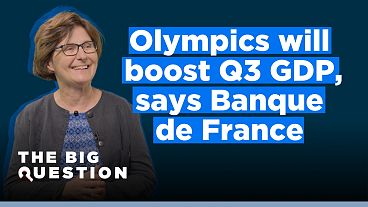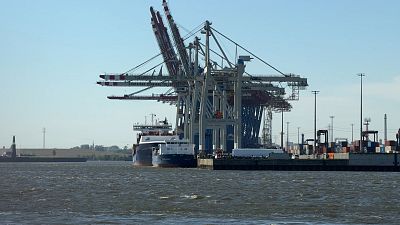Middle-income nations are stuck on the road from rags to riches. According to the World Bank, the status quo is partly to blame.
More than 100 countries could hit a brick wall on the path from low-income to high-income status in the coming decades, according to a new World Bank report shared on Thursday.
As nations grow wealthier, the group noted that most reach a plateau, which sits at around 10% of annual US GDP per person.
This, to use a term coined by the World Bank, is the "middle-income trap".
At the end of 2023, 108 countries were classified as middle-income, each with an annual GDP per capita in the range of $1,136 (€1,348.5) to $13,845 (€16,434.7).
"The ambition of the 108 middle-income countries … is to reach high-income status within the next two or three decades," said the World Bank report.
Since 1990, only 34 middle-income countries have managed this transition, a rate deemed "dismal" by the World Bank.
In fact, growth slowdowns occur more frequently in middle-income countries than in low- or high-income countries.
Estimates from the World Bank suggest that, if investments in growth follow recent and historic trends, most middle-income countries are likely to experience significant slowdowns between 2024 and 2100.
How to escape the income trap?
One reason why nations reach an income plateau is that their growth policies are misguided, argued the World Bank.
According to the report, middle-income nations must take a three-pronged approach, focusing not only on domestic investment but also "infusion".
Infusion is when nations imitate technologies and business models used by more advanced economies.
Only once a country has successfully implemented investment and infusion can it then focus on innovation.
Rather than simply borrowing ideas from other innovators, this means nations can push frontiers further.
Strong institutions, the World Bank emphasised, are important if nations want to follow this three-step guide.
It also warned of the dangers of protectionism, which can "potentially worsen the diffusion of knowledge to low- and middle-income countries".
The status-quo must go?
"The gales of creative destruction carry new ideas, products, processes, and practices to the shores of middle-income economies," the World Bank argued in Thursday’s report.
While the status quo isn’t always negative, an unchanging business environment can stunt innovation and growth.
In order to avoid stagnation, the World Bank advised that middle-income countries must not allow established firms to hold back social mobility.
Large companies could do this by gatekeeping resources, or restricting access to opportunities.
"Both incumbents and entrants can create value," said the World Bank.
"Incumbents bring scale" while "entrants bring change", meaning that neither should be vilified or coddled.
While new firms can bring new products, production processes, or ideas to the table, they must still be allowed to fail.
"Letting inefficient firms and business models fail is a core principle of creative destruction," argues the World Bank.
As a result, economic crises can be restorative as well as painful.
Rewarding talent
Growth requires creativity, talent, and skill, all of which can be nurtured or stifled through effective policy decisions.
"Middle-income countries have smaller reservoirs of skilled talent than advanced economies and are less efficient in utilising them, so they will have to become better at both accumulating and allocating talent," said the World Bank.
One way to upgrade workforces is to invest in education, and to allow talented individuals to thrive regardless of their background or gender.
According to the World Bank, up to 40% of the observed growth in the US between 1960 and 2010 can be attributed to a decline in gender and racial discrimination in education and work.
Nurturing a talented workforce is more important than ever as ageing populations, rising debt levels, and the climate crisis threaten growth.
The middle-income trap, according to the World Bank, "has implications for the whole world".
"Middle-income countries are home to three out of every four people — and nearly two-thirds of those who struggle in extreme poverty," stressed Thursday's report.
"They are responsible for 40% of the world's total economic output — and nearly two thirds of global carbon emissions."
"In short, the global effort to end extreme poverty and spread prosperity and liveability will largely be won or lost in these countries."















